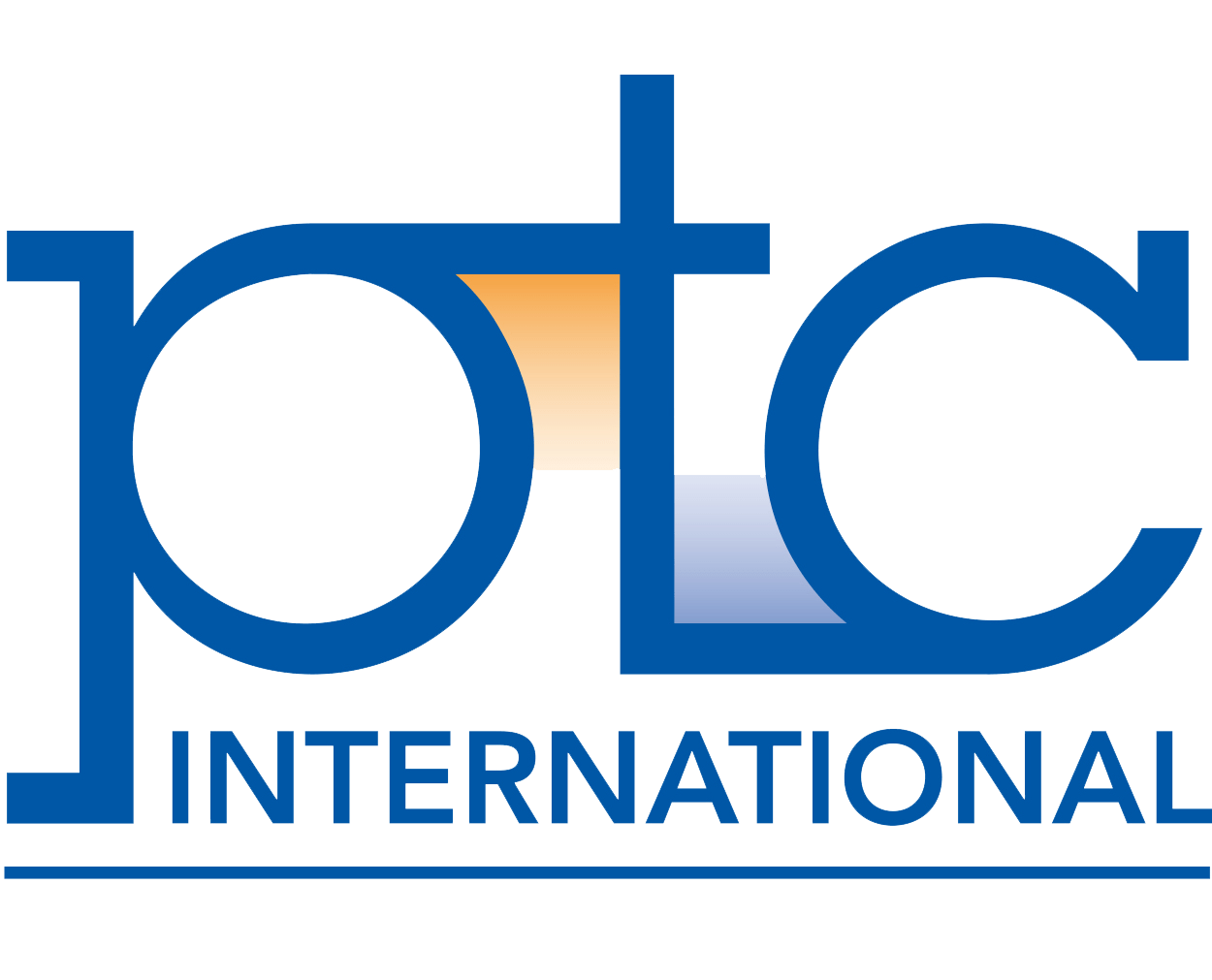Surface and Upper Air Parameters
Surface and Upper Air Parameters
PTC works with Yankee Environmental Systems (YES) to market technology that reduces both the subjectivity and overall dependence on human labor for routine environmental observations, thereby increasing data quality and lowering the its customers’ cost of daily operations. Measurement products from YES cover surface and upper air weather parameters for solar radiation, air temperature, ambient dew point/humidity, barometric pressure, winds and precipitation.
Total Sky Imager
Model TSI-880 Total Sky Imager (TSI) is an automatic, full-color sky imager system that provides real-time display of daytime sky conditions. At many sites, the accurate determination of sky conditions is a highly desirable yet rarely attainable goal. Traditionally, human observers reported sky conditions, resulting in considerable discrepancies from subjective observations. In practice, the use of human observers is not always feasible due to budgetary constraints. The TSI-880 now replaces the need for these human observers under all weather conditions. Unlike the TSI-440 which require a NT workstation to process their images, the TSI-880 is a self-contained system which automatically processes images internally and can be optionally teamed with YESDAQ to store data from networks of remote imagers. In addition to present weather and sky monitoring, it provides and automated real-time panoramic image making it well suited for physical security applications.
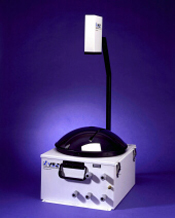


Model TSI-440 Total Sky Imager (TSI) is a full color sky camera and software package that offers the forecaster as well as the atmospheric research community an easy-to-use and reliable field sensor for sky imaging. The TSI is designed for long-term field installations and features state-of-the-art camera optics as well as user-serviceable mirror components. The system captures images into industry-standard JPEG format data files, which are then analyzed for parameters such as fractional cloud cover. For installations where the TSI can be connected to a TCP/IP network, the system acts as a sky image server to World-Wide-Web browsers on the Internet.
UV Radiometry
Rotating Shadowband Spectroradiometer
Model RSS-1024 / UVRSS-1024 Rotating Shadowband Spectroradiometer(RSS) combines a high-performance 1024-pixel CCD spectrograph with an external rotating shadowband similar to that used in our MFR instrument family. It automatically provides instantaneous direct, diffuse, and total irradiance measurements across the majority of the solar spectral range. System optics are thermally stabilized and environmentally sealed to provide excellent long term calibration stability. Instead of using a mechanically scanned diffraction grating, the RSS makes measurements simultaneously across all 1024 channels, and meets the Baseline Solar Radiation Network’s requirements for atmospheric turbidity measurements. The shadowband enables the instrument to measure all three components of solar irradiance with one detector. The Model RSS-1024 covers the 360-1100nm visible/NIR range and the Model UVRSS-1024 covers the 292-370nm UV-B and UV-A range. Both systems feature web access to live or stored calibrated spectral irradiance and optical depth data, and use YESDAQ distributed database technology to support networks of remote systems around the globe.
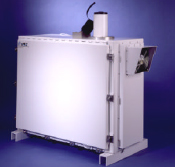


Ultraviolet Multifilter Rotating Shadowband Radiometer
Model UVMFR Ultraviolet Multifilter Rotating Shadowband Radiometer measures total, diffuse, and direct irradiance at seven narrowband wavelengths in the UV-B and UV-A regions. The shadowband enables the instrument to measure all three components of solar irradiance with one detector. The UVMFR-7 system includes the YESDAS-2 datalogger and data analysis software. The MFR-7, a shadowband instrument for the visible/NIR, is also available.
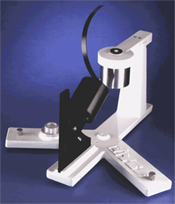


Pyranometers
The UVB-1 and UVA-1 Pyranometers measure total irradiance from 280 to 320 nm and 320 to 400 nm, respectively. The instruments produce a high level 0-4 VDC output signal and are thermally stabilized for long term reference-grade measurements. The UVB-1 is field proven in networks throughout the world. Solar dose modeling software, UV-Calc, is included with the instrument. The UVPS power supply (shown) or the YESDAS-2 datalogger are available as accessories.
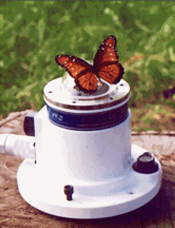


Sun Photometer
The SPUV-6/10 Sun Photometer measures direct normal solar irradiance at up to ten narrowband wavelengths from 300 in the UV-B through 1020 nm in the near-IR, and is the world’s most advanced commercial solar sun photometer. Thermally stabilized, environmentally sealed state-of-the-art interference filters, with energy-absorbing visible pre-filters on UV channels provide long term calibration stability. Instead of using a rotating filter wheel, it makes measurements simultaneously across all channels meeting the Baseline Solar Radiation Network’s requirements for atmospheric turbidity measurements. A modular mechanical design permits rapid channel service. The SPUV mounts on most solar trackers (shown here mounted on the ST-1). The SPUV system includes the YESDAS-2 datalogger and works with YESDAS Manager data analysis software.
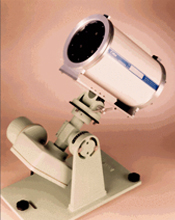


UV Radiation
Multifilter Rotating Shadowband Radiometer
Model MFR-7 Multifilter Rotating Shadowband Radiometer measures total, diffuse, and direct irradiance at six wavelengths (415, 500, 615, 673, 870, and 940 nm, each 10 nm FWHM) in the visible/NIR, and includes one unfiltered broad-band silicon pyranometer. Thermally stabilized, environmentally sealed state-of-the-art interference filters provide excellent long term calibration stability. Instead of using a rotating filter wheels the MFR-7 makes measurements simultaneously across all seven channels, meeting the Baseline Solar Radiation Network’s requirements for atmospheric turbidity measurements. The shadowband enables the instrument to measure all three components of solar irradiance with one detector. The MFR-7 system includes the YESDAS-2 datalogger and works with YESDAS Manager data analysis software. The UVMFR, a shadowband instrument for the UV region, is also available.
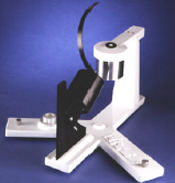




Single Detector Rotating Shadowband Radiometer
Model SDR-1 Single Detector Rotating Shadowband Radiometer is identical to our standard Multifilter Rotating Shadowband Radiometer (MFR-7) except that it has a single cosine-corrected broadband silicon channel that provides fully automatic measurements of global, diffuse, and direct normal components of solar radiation. It is very similar to bolometric/thermopile type radiometers except the spectral response of silicon does not extend as far into the mid infrared. Historically, a total solar pyranometer has been integrated with a solar tracker-mounted normal incidence pyrheliometer and a third shaded pyranometer to make these measurements, as is done in the Baseline Solar Radiation Network. However, the SDR-1 offers a simpler and less expensive alternative than these separate instruments. Because it uses only one detector to make all three measurements, there is only one calibration necessary. In addition, because it uses only one mechanical axis of rotation it tends to stay in alignment with the sun much better than a two axis tracker, reducing labor required to operate the system.





Total Solar Pyranometer
Model TSP-400 Total Solar Pyranometer is a precision meteorological instrument that measures global (direct and diffuse) total solar radiation. Like the other members of the YES Total Solar Pyranometer family, it is ruggedly designed for long-term field use. The Model TSP-400V adds a ventilation system for increased accuracy under all ambient temperature conditions. When properly characterized, the Model TSP-400V meets or exceeds the requirements for a World Meteorological Organization high class pyranometer (formerly called a secondary standard).
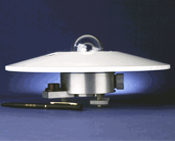


Model TSP-700 Total Solar Pyranometer uses platinum resistance thermometers to make high accuracy broadband irradiance measurements and replace older thermopile measurement technology. The instrument offers an excellent cosine response and a high level output signal that is totally independent of ambient temperature changes. When properly characterized, the ventilated TSP-700 meets the requirements for a World Meteorological Organization high class pyranometer (formerly called a secondary standard). YES Models TSP-400 and TSP-100 offer lower cost alternatives for applications that do not require the precision of the TSP-700.
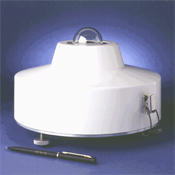


UV/Visible/NIR Atmospheric Radiation Monitoring System
UV/Visible/NIR Atmospheric Radiation Monitoring System (ARMS) consists of the YES MFR-7, UVMFR-7, and UVB-1 pyranometer. This system forms the backbone of the USDA’s “UVB Radiation Monitoring Program” run by scientists at Colorado State University (CSU) in Fort Collins, CO. Together these instruments measure direct, diffuse and total spectral irradiance from 300 to 940 nm, as well as broadband UVB and visible irradiance. The network has been providing UV data from nearly 40 sites around North America to the research community for the past seven years. In addition to publishing the data on the web, the group of scientists at CSU who run the network have developed algorithms to extract certain data such as ozone retrievals and have published numerous papers.
The ARMS can optionally be configured with auxiliary sensors such as the TSP-700 pyranometer and/or the TIR-550 IR radiometer to extend global measurements to the Near-IR and IR.
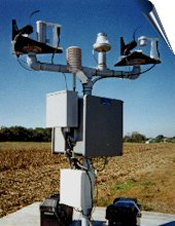


Other products from YES
Surface and Upper Air Parameters
PTC works with Yankee Environmental Systems (YES) to market technology that reduces both the subjectivity and overall dependence on human labor for routine environmental observations, thereby increasing data quality and lowering the its customers’ cost of daily operations. Measurement products from YES cover surface and upper air weather parameters for solar radiation, air temperature, ambient dew point/humidity, barometric pressure, winds and precipitation.
Total Sky Imager
Model TSI-880 Total Sky Imager (TSI) is an automatic, full-color sky imager system that provides real-time display of daytime sky conditions. At many sites, the accurate determination of sky conditions is a highly desirable yet rarely attainable goal. Traditionally, human observers reported sky conditions, resulting in considerable discrepancies from subjective observations. In practice, the use of human observers is not always feasible due to budgetary constraints. The TSI-880 now replaces the need for these human observers under all weather conditions. Unlike the TSI-440 which require a NT workstation to process their images, the TSI-880 is a self-contained system which automatically processes images internally and can be optionally teamed with YESDAQ to store data from networks of remote imagers. In addition to present weather and sky monitoring, it provides and automated real-time panoramic image making it well suited for physical security applications.



Model TSI-440 Total Sky Imager (TSI) is a full color sky camera and software package that offers the forecaster as well as the atmospheric research community an easy-to-use and reliable field sensor for sky imaging. The TSI is designed for long-term field installations and features state-of-the-art camera optics as well as user-serviceable mirror components. The system captures images into industry-standard JPEG format data files, which are then analyzed for parameters such as fractional cloud cover. For installations where the TSI can be connected to a TCP/IP network, the system acts as a sky image server to World-Wide-Web browsers on the Internet.
UV Radiometry
Rotating Shadowband Spectroradiometer
Model RSS-1024 / UVRSS-1024 Rotating Shadowband Spectroradiometer(RSS) combines a high-performance 1024-pixel CCD spectrograph with an external rotating shadowband similar to that used in our MFR instrument family. It automatically provides instantaneous direct, diffuse, and total irradiance measurements across the majority of the solar spectral range. System optics are thermally stabilized and environmentally sealed to provide excellent long term calibration stability. Instead of using a mechanically scanned diffraction grating, the RSS makes measurements simultaneously across all 1024 channels, and meets the Baseline Solar Radiation Network’s requirements for atmospheric turbidity measurements. The shadowband enables the instrument to measure all three components of solar irradiance with one detector. The Model RSS-1024 covers the 360-1100nm visible/NIR range and the Model UVRSS-1024 covers the 292-370nm UV-B and UV-A range. Both systems feature web access to live or stored calibrated spectral irradiance and optical depth data, and use YESDAQ distributed database technology to support networks of remote systems around the globe.



Ultraviolet Multifilter Rotating Shadowband Radiometer
Model UVMFR Ultraviolet Multifilter Rotating Shadowband Radiometer measures total, diffuse, and direct irradiance at seven narrowband wavelengths in the UV-B and UV-A regions. The shadowband enables the instrument to measure all three components of solar irradiance with one detector. The UVMFR-7 system includes the YESDAS-2 datalogger and data analysis software. The MFR-7, a shadowband instrument for the visible/NIR, is also available.



Pyranometers
The UVB-1 and UVA-1 Pyranometers measure total irradiance from 280 to 320 nm and 320 to 400 nm, respectively. The instruments produce a high level 0-4 VDC output signal and are thermally stabilized for long term reference-grade measurements. The UVB-1 is field proven in networks throughout the world. Solar dose modeling software, UV-Calc, is included with the instrument. The UVPS power supply (shown) or the YESDAS-2 datalogger are available as accessories.



Sun Photometer
The SPUV-6/10 Sun Photometer measures direct normal solar irradiance at up to ten narrowband wavelengths from 300 in the UV-B through 1020 nm in the near-IR, and is the world’s most advanced commercial solar sun photometer. Thermally stabilized, environmentally sealed state-of-the-art interference filters, with energy-absorbing visible pre-filters on UV channels provide long term calibration stability. Instead of using a rotating filter wheel, it makes measurements simultaneously across all channels meeting the Baseline Solar Radiation Network’s requirements for atmospheric turbidity measurements. A modular mechanical design permits rapid channel service. The SPUV mounts on most solar trackers (shown here mounted on the ST-1). The SPUV system includes the YESDAS-2 datalogger and works with YESDAS Manager data analysis software.



UV Radiation
Multifilter Rotating Shadowband Radiometer
Model MFR-7 Multifilter Rotating Shadowband Radiometer measures total, diffuse, and direct irradiance at six wavelengths (415, 500, 615, 673, 870, and 940 nm, each 10 nm FWHM) in the visible/NIR, and includes one unfiltered broad-band silicon pyranometer. Thermally stabilized, environmentally sealed state-of-the-art interference filters provide excellent long term calibration stability. Instead of using a rotating filter wheels the MFR-7 makes measurements simultaneously across all seven channels, meeting the Baseline Solar Radiation Network’s requirements for atmospheric turbidity measurements. The shadowband enables the instrument to measure all three components of solar irradiance with one detector. The MFR-7 system includes the YESDAS-2 datalogger and works with YESDAS Manager data analysis software. The UVMFR, a shadowband instrument for the UV region, is also available.





Single Detector Rotating Shadowband Radiometer
Model SDR-1 Single Detector Rotating Shadowband Radiometer is identical to our standard Multifilter Rotating Shadowband Radiometer (MFR-7) except that it has a single cosine-corrected broadband silicon channel that provides fully automatic measurements of global, diffuse, and direct normal components of solar radiation. It is very similar to bolometric/thermopile type radiometers except the spectral response of silicon does not extend as far into the mid infrared. Historically, a total solar pyranometer has been integrated with a solar tracker-mounted normal incidence pyrheliometer and a third shaded pyranometer to make these measurements, as is done in the Baseline Solar Radiation Network. However, the SDR-1 offers a simpler and less expensive alternative than these separate instruments. Because it uses only one detector to make all three measurements, there is only one calibration necessary. In addition, because it uses only one mechanical axis of rotation it tends to stay in alignment with the sun much better than a two axis tracker, reducing labor required to operate the system.





Total Solar Pyranometer
Model TSP-400 Total Solar Pyranometer is a precision meteorological instrument that measures global (direct and diffuse) total solar radiation. Like the other members of the YES Total Solar Pyranometer family, it is ruggedly designed for long-term field use. The Model TSP-400V adds a ventilation system for increased accuracy under all ambient temperature conditions. When properly characterized, the Model TSP-400V meets or exceeds the requirements for a World Meteorological Organization high class pyranometer (formerly called a secondary standard).



Model TSP-700 Total Solar Pyranometer uses platinum resistance thermometers to make high accuracy broadband irradiance measurements and replace older thermopile measurement technology. The instrument offers an excellent cosine response and a high level output signal that is totally independent of ambient temperature changes. When properly characterized, the ventilated TSP-700 meets the requirements for a World Meteorological Organization high class pyranometer (formerly called a secondary standard). YES Models TSP-400 and TSP-100 offer lower cost alternatives for applications that do not require the precision of the TSP-700.



UV/Visible/NIR Atmospheric Radiation Monitoring System
UV/Visible/NIR Atmospheric Radiation Monitoring System (ARMS) consists of the YES MFR-7, UVMFR-7, and UVB-1 pyranometer. This system forms the backbone of the USDA’s “UVB Radiation Monitoring Program” run by scientists at Colorado State University (CSU) in Fort Collins, CO. Together these instruments measure direct, diffuse and total spectral irradiance from 300 to 940 nm, as well as broadband UVB and visible irradiance. The network has been providing UV data from nearly 40 sites around North America to the research community for the past seven years. In addition to publishing the data on the web, the group of scientists at CSU who run the network have developed algorithms to extract certain data such as ozone retrievals and have published numerous papers.
The ARMS can optionally be configured with auxiliary sensors such as the TSP-700 pyranometer and/or the TIR-550 IR radiometer to extend global measurements to the Near-IR and IR.



Other products from YES
Would like to obtain more info and learn more of its applications?
